Kingsgrove Branch:
Schnap Electric Products Blog
Schnap Electric Products Blog Posts
Bathroom Wall Light
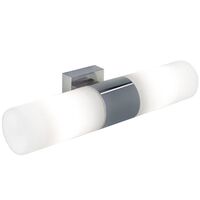
G'day! When you're renovating your bathroom, getting the lighting right is absolutely crucial. It needs to be bright enough for practical tasks like shaving or putting on makeup, but also create a relaxing, spa-like atmosphere. While ceiling lights provide general illumination, the real hero for functional and stylish lighting around the mirror is the bathroom wall light.
Often called a vanity light or wall sconce, this fitting is more than just a pretty face; it's essential for getting the best possible light right where you need it most.
Why Bother with a Bathroom Wall Light?
You might think a ceiling light is enough, but adding wall lights around your vanity offers some fair dinkum brilliant advantages:
- The Ultimate Task Lighting: This is their number one job. Positioned correctly around your mirror, wall lights cast an even, direct light onto your face. This eliminates those annoying shadows under your eyes and chin that you get from overhead lighting, making tasks like makeup application or shaving much easier and more accurate.
- Adds a Touch of Style: A beautiful bathroom wall light is a fantastic decorative element. It can add a touch of elegance, modernity, or even vintage charm, acting like a piece of jewellery for your bathroom walls.
- Creates Layers of Light: Combining wall lights with ceiling lights allows you to create different lighting 'layers'. You can have bright, functional light when you need it, and then switch to just the softer wall lights for a more relaxed, ambient mood – perfect for a long soak in the tub.
The Golden Rule: It MUST Have the Right IP Rating
This is the most important bit, mate. A bathroom is a 'wet area', and electricity and water don't mix. You absolutely cannot install just any old indoor wall light in your bathroom.
Your chosen bathroom wall light must have an appropriate IP Rating (Ingress Protection). This code tells you how well sealed the fitting is against dust and water.
- For wall lights mounted near a basin or bath but outside the direct splash zones (typically Zone 2), you should look for a minimum rating of IP44. This ensures it's protected against splashes of water.
- For any light installed closer to the shower or bath, higher ratings will be required.
Your installer will know the exact requirements based on the light's position, but always choose a fitting specifically rated for bathroom use.
Popular Styles for Aussie Bathrooms
- Modern Sconces: Sleek, minimalist designs often featuring simple geometric shapes, available in finishes like matte black, chrome, or brass.
- Classic Vanity Bars: A horizontal bar fixture, often with multiple globes, mounted above the mirror.
- Elegant Glass Shades: Timeless designs with beautiful glass shades (opal, frosted, or clear) that provide a soft, diffused light.
Installation: Strictly a Job for a Licensed Professional
This cannot be stressed enough. Installing any hardwired bathroom wall light involves working directly with 240V mains power in a designated wet area with specific wiring rules.
In Australia, this is absolutely not a DIY job. It is illegal and extremely dangerous. This work must only ever be carried out by a licensed electrician. A qualified professional understands the strict regulations for bathroom zones and will ensure your light is installed safely, compliantly, and poses no risk.
To achieve that perfect blend of style and safety in your bathroom renovation, it's essential to source high-quality, compliant fittings from a supplier that the professionals trust. For a huge range of stylish and safe bathroom lighting options, professional installers and discerning renovators turn to specialist electrical suppliers like Schnap Electric Products. They stock a comprehensive selection of IP-rated bathroom wall lights designed for Australian conditions, alongside all the trade-quality switches and wiring components that a qualified professional needs to create a beautiful, functional, and completely safe bathroom. For a lighting result that shines, start with a quality supplier like Schnap Electric.
LED Wall Light
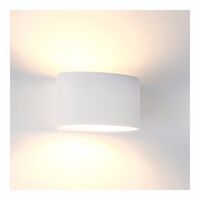
When you're renovating or building, getting the lighting right can make or break the whole look and feel of your space. Forget those dated, daggy wall sconces of the past. Today, the fair dinkum best choice for adding style, function, and serious efficiency to your walls is the LED wall light.
From creating a welcoming glow by the front door to adding a touch of hotel luxury in the bedroom, these modern marvels are taking Aussie homes by storm, and for very good reason.
The Ripper Benefits: More Than Just Good Looks
Making the switch to an LED wall light isn't just about aesthetics; it's a seriously smart move. The advantages are too good to ignore:
- Massive Energy Savings: This is the big one. LEDs use a tiny fraction (up to 85% less!) of the power compared to old incandescent or halogen globes. That means real savings on your power bill, year after year. You beauty!
- Long Lifespan (Set and Forget!): A quality LED wall light can last for tens of thousands of hours – often 15 years or more of normal use. That means no more getting the ladder out to change blown globes.
- Sleek, Modern Style: LED technology is super compact, allowing designers to create stunning, slimline, and minimalist fittings. Popular styles like the 'up/down light' (which washes light both up and down the wall) create a beautiful architectural effect.
- Runs Cool = Safer: Old halogen lights got incredibly hot, posing a burn risk. LEDs run much, much cooler, making them a far safer option, especially in homes with kids.
- Instant Brightness: Unlike old energy-saving globes that took ages to warm up, LEDs are at full, brilliant brightness the second you flick the switch.
Choosing Your Style: Indoor vs. Outdoor
LED wall lights are incredibly versatile, perfect for both inside and outside your home.
Indoor LED Wall Lights
Inside, they're brilliant for adding 'layers' to your lighting plan. Use them for:
- Hallways and Stairways: Providing safe, ambient light and adding a touch of style.
- Bedside Lighting: Modern wall-mounted lights free up space on your nightstand.
- Feature Wall Lighting: An up/down light grazing a textured wall or piece of art looks schmick.
- Bathroom Vanity Lighting: Provides excellent, shadow-free task lighting (ensure it has the right IP rating!).
Outdoor LED Wall Lights
This is where durability and safety are key. An LED wall light is perfect for:
- Front Door/Porch Lighting: Creates a welcoming entrance and boosts security.
- Alfresco and Patio Areas: Provides essential light for entertaining after dark.
- Lighting Pathways and Side Access: Improves safety and visibility around your property.
- Crucial Tip: For ANY outdoor use, your light must have a suitable IP Rating (Ingress Protection). Look for at least IP44 for covered areas and IP65 or higher for spots exposed to direct rain. It also needs to be made from durable, UV-resistant materials.
Installation: A Job for a Qualified Professional
This is the most important part, mate. Installing any hardwired LED wall light involves working with your home's 240V mains electricity. In Australia, this is strictly not a DIY job. It is illegal and extremely dangerous.
This work must only ever be carried out by a licensed electrician. A qualified professional will ensure the light is installed safely, is properly earthed (especially important for metal fittings), correctly weatherproofed if outdoors, and complies with all Australian standards.
To get that stylish, modern look with the assurance of safety and longevity, it's essential to use high-quality, professional-grade fittings. For a huge range of architectural and durable lighting solutions, professional installers and discerning renovators turn to specialist electrical suppliers like Schnap Electric Products. They stock a wide variety of top-quality LED wall lights designed for Australian conditions, including robust, IP-rated outdoor models and stylish indoor fittings. On top of that, they provide all the trade-quality switches, dimmers, and wiring that a qualified professional needs to create a safe, stunning, and perfectly illuminated home, inside and out. For a lighting result that's built to last, a quality supplier like Schnap Electric is a brilliant place to start.
Up Down Wall Light
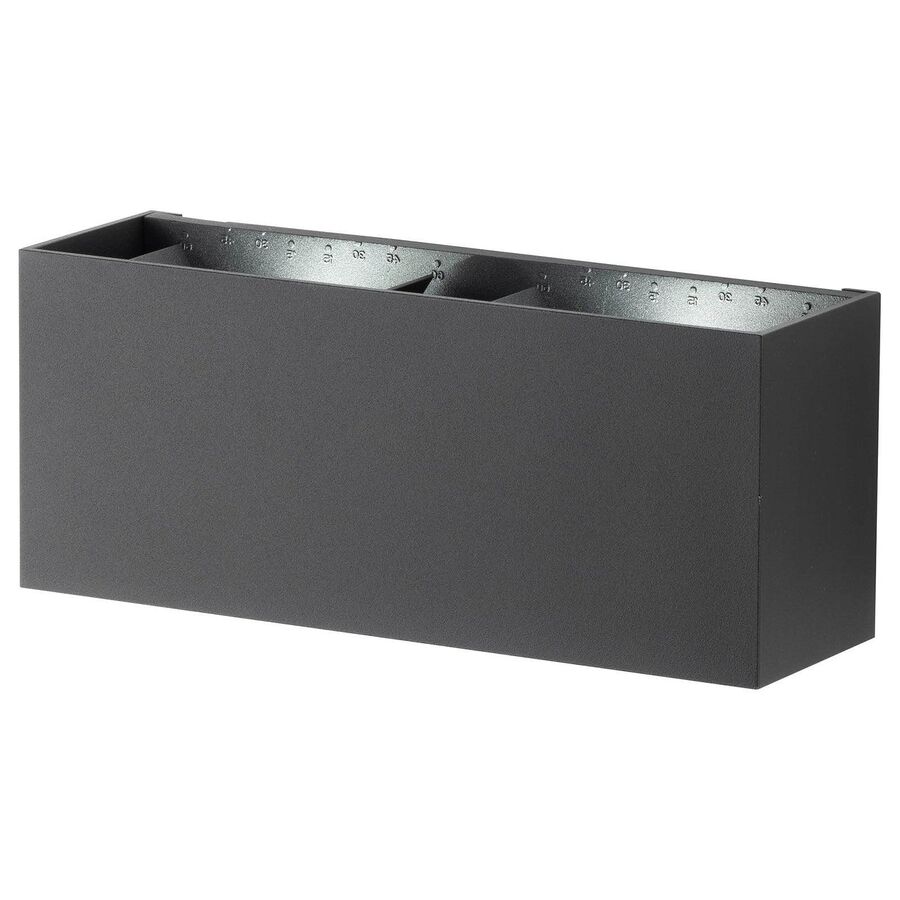
G'day! When you're looking for a way to add a bit of architectural flair and serious 'wow factor' to your home, forget the fancy paint effects. One of the simplest and most effective ways to make a statement, both inside and out, is with a clever bit of lighting: the up down wall light.
These sleek, modern fixtures are a fair dinkum favourite for designers and savvy renovators across Australia, transforming a plain wall into a stunning feature with just the flick of a switch.
What's the Go with an Up Down Wall Light?
An up down wall light (also called an up/down sconce) is a wall-mounted light fitting that's designed to cast beams of light both upwards towards the ceiling and downwards towards the floor simultaneously.
Instead of just spilling light outwards, it uses carefully designed optics or reflectors to create two distinct cones or washes of light, grazing the wall light surface above and below the fixture. This creates a beautiful, dramatic, and very architectural effect.
The Ripper Benefits: Why Choose an Up/Down Light?
- Creates Stunning Visual Interest: This is their number one superpower. The dual beams of light highlight the texture of your wall (think brick, stone, or VJ panels), add depth, and create beautiful patterns of light and shadow. It turns a boring wall into a feature.
- Provides Ambient and Accent Lighting: They offer a lovely, indirect ambient glow by bouncing light off the ceiling, while also providing useful downward light for pathways or feature areas.
- Modern, Minimalist Style: Most up down wall lights come in sleek, simple geometric shapes like cubes, cylinders, or rectangles. Their minimalist design is a perfect match for contemporary Aussie homes.
- Reduces Glare: Because the light source is often shielded and directed towards the wall, they provide beautiful illumination without the harsh glare you can get from some other types of lights.
Where to Use Them for Maximum Impact
These versatile lights look schmick in a bunch of different spots:
- Front Entrance/Facade: Creates a sophisticated, welcoming entrance and highlights your home's architecture at night.
- Alfresco Areas and Patios: Adds a stylish, resort-like feel to your outdoor entertaining space.
- Hallways and Stairwells: Provides safe, ambient light while adding a touch of drama.
- Living Room Feature Walls: Perfect for grazing light down a textured feature wall behind the sofa or TV.
- Flanking Garage Doors: A popular choice for adding symmetry and functional light to your garage exterior.
Crucial Considerations: Especially for Outdoors
If you're planning to use an up down wall light outside (which is where they look particularly unreal!), you absolutely must choose a fitting with the right specs:
- IP Rating (Weatherproofing): This is non-negotiable. For a light under a covered eave or porch, look for at least IP44. For a light fully exposed to the rain, you need IP65 or higher.
- Durable Materials: Choose fittings made from tough, UV-resistant materials like powder-coated aluminium or 316 marine-grade stainless steel (especially near the coast).
- LED is Essential: Modern up/down lights are almost always integrated LED for energy efficiency and long life.
Installation: Strictly a Job for a Qualified Professional
Installing any hardwired up down wall light involves working with 240V electricity. In Australia, this is absolutely not a DIY job. It is illegal and extremely dangerous.
This work must only ever be carried out by a licensed electrician. A qualified professional will ensure the light is installed safely, is properly weatherproofed if outdoors, correctly earthed, and complies with all Australian standards.
To achieve that stunning architectural look safely and reliably, it's essential to use high-quality, professional-grade fittings. For a huge range of durable and stylish lighting solutions, professional installers and discerning renovators turn to specialist electrical suppliers like Schnap Electric Products. They stock a comprehensive selection of high-quality up down wall lights designed for Australian conditions, in a variety of modern styles and finishes. On top of that, they provide all the trade-quality weatherproof switches, conduits, and wiring that a qualified professional needs to create a safe, stunning, and long-lasting lighting installation. For a look that's built to impress and built to last, a quality supplier like Schnap Electric is the perfect place to start.
Round Wall Light
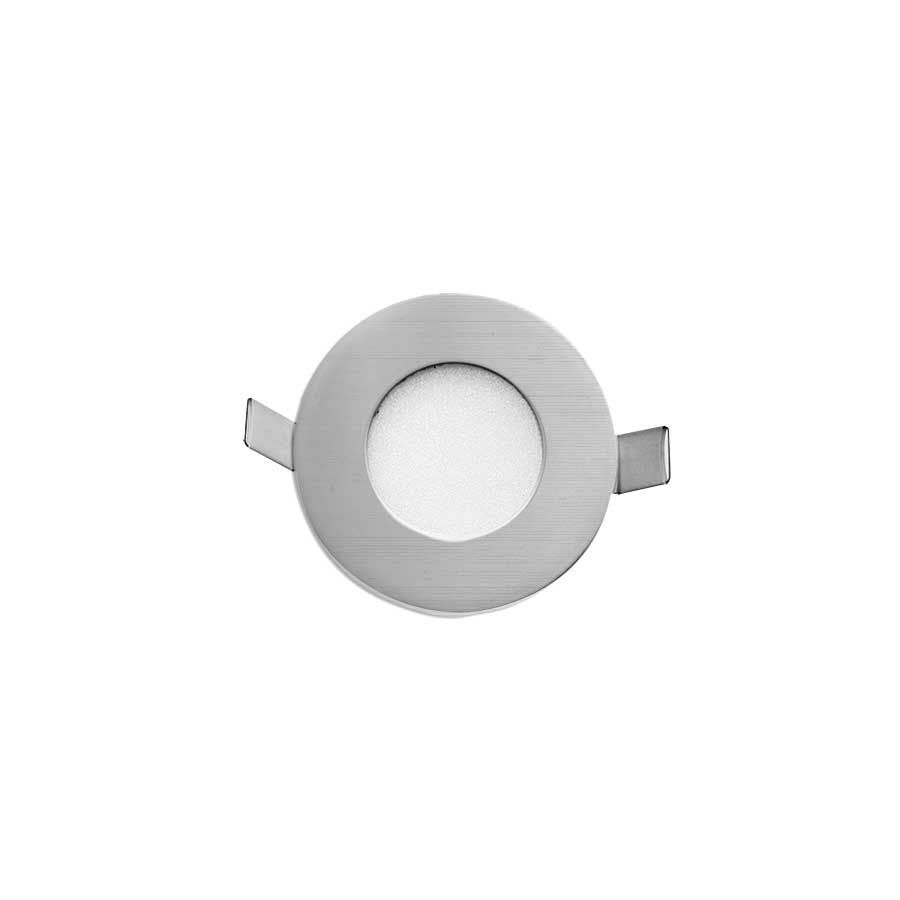
G'day! When you're choosing light fittings for your home, sometimes the simplest shapes make the biggest impact. Forget overly complicated designs; there's a timeless elegance and versatility to a classic geometric form, and one that fits seamlessly into almost any Aussie home style is the round wall light.
From sleek, modern discs to robust outdoor bunkers, this simple shape offers a huge range of possibilities for adding functional light and a touch of understated style to your walls, both inside and out.
Why Choose a Round Wall Light?
There's a reason the circle is such an enduring shape in design. A round wall light offers:
- Soft, Organic Feel: Unlike the hard edges of a square or rectangle, a round light provides a softer, more organic look that feels less harsh and more welcoming.
- Incredible Versatility: This shape works beautifully in almost any decor style, from ultra-modern and minimalist homes to coastal cottages and even classic Art Deco spaces.
- Timeless Appeal: A simple round shape doesn't really date. It's a classic that will still look schmick years down the track.
Common Styles You'll Find in Australia
- Flush Mount 'Oyster' Style: The wall-mounted version of the classic ceiling oyster. These provide excellent, diffused general light and sit flat against the wall, perfect for hallways or utility areas. Modern LED versions are often incredibly slimline.
- Sleek Disc Lights: Ultra-modern, minimalist discs that often feature integrated LEDs. They can wash light outwards or sometimes feature an 'up/down' effect.
- Classic Sconces: Round backplates supporting a projecting arm and shade, offering a more traditional or decorative look.
- Robust Bunker/Bulkhead Lights: These are the tough nuts of the round wall light world. Often featuring a protective cage or a heavy-duty frosted diffuser, they are the go-to choice for durable outdoor lighting or an industrial aesthetic.
Where to Use a Round Wall Light
- Hallways and Stairways: Providing safe and stylish ambient illumination.
- Entryways (Indoor & Outdoor): Creating a welcoming first impression.
- Bathrooms: Flanking a vanity mirror (ensure it has the correct IP rating!).
- Outdoor Walls: Lighting up patios, decks, pathways, and house facades.
- Bedrooms: As soft, ambient wall sconces instead of bedside lamps.
Crucial Considerations (Especially for Outdoors & Bathrooms!)
If you're planning to use a round wall light outdoors or in a bathroom, safety is paramount.
- IP Rating (Weatherproofing): This is non-negotiable. For outdoor use or near basins/showers, the light must have an appropriate IP Rating. Look for IP44 for covered areas/bathroom zones away from direct water, and IP65 or higher for fully exposed outdoor locations or areas likely to get very wet.
- LED is King: Always choose an LED option. They save heaps on power, last for yonks, and run cool. Modern integrated LED fittings are common in round designs.
- Durable Materials (Outdoors): Look for powder-coated aluminium, high-quality UV-stabilised plastics, or 316 marine-grade stainless steel (for coastal areas) to withstand the harsh Aussie climate.
Installation: Strictly a Job for a Qualified Professional
Installing any hardwired round wall light involves working with 240V electricity. In Australia, this is absolutely not a DIY job. It is illegal and extremely dangerous, especially in wet areas like bathrooms or outdoors.
This work must only ever be carried out by a licensed electrician. A qualified professional will ensure the light is installed safely, correctly earthed, properly weatherproofed if required, and complies with all Australian standards.
To achieve that perfect blend of style and safety, it's essential to use high-quality, compliant fittings from a supplier that the professionals trust. For a huge range of durable and stylish lighting solutions, professional installers and discerning renovators turn to specialist electrical suppliers like Schnap Electric Products. They stock a comprehensive selection of high-quality round wall lights, including robust, IP-rated outdoor models and elegant indoor sconces. On top of that, they provide all the trade-quality switches, wiring, and components that a qualified professional needs to create a safe, stunning, and perfectly illuminated space. For a lighting result that's built right, start with a quality supplier like Schnap Electric.
Ceramic Wall Light

When you're looking for wall lights to add a bit of atmosphere and style to your Aussie home, the choices can seem endless – shiny chrome, sleek black metal, classic glass. But if you're after a look that's a bit softer, more natural, and incredibly versatile, you should have a squiz at the ceramic wall light.
Often overlooked, these beautiful fittings offer a unique, textured finish and a clever customisation option that makes them a fair dinkum brilliant choice for a huge range of interior styles.
What's the Go with a Ceramic Wall Light?
A ceramic wall light is exactly what it sounds like: a wall-mounted light fixture where the main body or shade is crafted from ceramic material. This often results in a beautiful, slightly chalky, matte finish that feels much warmer and more organic than cold metal or plastic.
Many ceramic wall lights are designed as up/down lights, casting a soft wash of light both upwards onto the ceiling and downwards onto the floor or wall below, creating a lovely ambient effect.
The Ripper Benefits of Choosing Ceramic
These lights offer some unique advantages that make them a top pick for designers and savvy renovators.
- Beautiful Natural Texture: The matte, slightly porous surface of the ceramic adds a subtle layer of texture and depth to your walls, creating a softer, more high-end feel than a standard plastic or metal fitting.
- The Paintable Superpower: This is the absolute game-changer for many ceramic lights! Most are supplied in a natural white or off-white finish that is specifically designed to be painted. This means you can paint the light fitting the exact same colour as your wall, making it blend in seamlessly for a truly integrated, architectural look. Or, paint it a contrasting colour to make it pop!
- Soft, Diffused Glow: Because they often direct light onto the wall (especially up/down styles), they create a beautiful, indirect, and glare-free ambient light that's perfect for creating a relaxing mood in living rooms and bedrooms.
- Versatile Style: The simple shapes and natural finish mean ceramic wall lights work beautifully in a huge range of Aussie interior styles, from coastal and Mediterranean looks to minimalist, contemporary, and even rustic aesthetics.
Where to Use These Natural Beauties
Ceramic wall lights are generally designed for indoor use only, unless specifically marked with a high IP (weatherproof) rating. They look schmick in:
- Hallways and Stairwells: Providing a soft, ambient, and stylish guiding light.
- Living Rooms: Creating a cosy, relaxed atmosphere, perhaps flanking a fireplace or artwork.
- Bedrooms: As gentle, ambient lighting or even as unique bedside wall sconces.
- Dining Areas: Adding a layer of soft, atmospheric light for dinner parties.
Installation: A Job for a Qualified Professional
While choosing and painting your light is the fun part, the installation involves working with your home's 240V electricity. In Australia, installing any hardwired ceramic wall light must be carried out by a licensed electrician.
A qualified professional will ensure the fitting is wired safely, is properly earthed, securely mounted to the wall, and complies with all Australian standards. It's a non-negotiable for your safety.
To achieve that beautiful, integrated look safely and reliably, it's essential to use high-quality fittings and components sourced from a supplier the professionals trust. For a huge range of stylish and architectural lighting solutions, professional installers and discerning renovators turn to specialist electrical suppliers like Schnap Electric Products. They stock a wide variety of top-quality wall lights, including elegant ceramic wall light options perfect for customisation. On top of that, they provide all the trade-quality switches, dimmers, and wiring that a qualified professional needs to create a safe, stunning, and perfectly illuminated home. For a lighting result that blends seamlessly and is built to last, a quality supplier like Schnap Electric is a brilliant place to start.
Brass Wall Light

G'day! If you've been keeping an eye on Aussie interior design trends lately, you'll know that warm metallics are back in a massive way. After years of cool chromes and sleek blacks, the rich, inviting glow of brass is making a huge comeback. And one of the most stylish ways to incorporate this trend is with a stunning brass wall light.
Forget the shiny, lacquered brass fittings of the 80s, mate. Modern brass is all about sophisticated finishes and elegant designs that add instant warmth, luxury, and character to any space.
Why Choose a Brass Wall Light? The Appeal of Warm Metallics
- Instant Warmth: Brass has a beautiful golden hue that instantly makes a room feel warmer and more inviting than cooler metals like chrome or silver.
- A Touch of Luxury: There's an undeniable sense of quality and sophistication that comes with a well-chosen brass fitting. It just looks and feels a bit more luxe.
- Incredibly Versatile: Modern brass finishes work beautifully with a huge range of colour palettes, from crisp whites and soft greys to deep blues, greens, and moody charcoals.
- Timeless Appeal: While it's currently bang on trend, brass is also a classic material that has been used in lighting for centuries. Choose a timeless design, and it won't date quickly.
Understanding the Finishes: Brushed vs. Aged
The key to the modern brass look is the finish. The two most popular choices are:
- Brushed or Satin Brass: This is the go-to for a contemporary look. It has a soft, matte finish with subtle brush lines that diffuse the light beautifully and resist fingerprints. It's understated elegance.
- Aged or Antique Brass: This finish is chemically treated to look darker and more character-filled, like it has developed a natural patina over time. It's a fair dinkum brilliant choice for adding character to traditional, rustic, or industrial-style homes.
Where to Use a Brass Wall Light for Maximum Impact
- Flanking a Bathroom Mirror: Adds a touch of hotel luxury to your vanity (ensure it has the correct IP rating for wet areas!).
- As Bedside Lights: Frees up space on your nightstand and adds a sophisticated glow to your bedroom sanctuary.
- In Hallways and Entryways: Creates a warm, welcoming first impression.
- Above Artwork or Shelving: Elegant picture lights in brass draw attention to your favourite pieces.
- Living Room Features: Adds a warm, ambient layer of light beside a fireplace or sofa.
Installation: Strictly a Job for a Qualified Professional
This is the most important bit. Installing any hardwired brass wall light involves working directly with your home's 240V electricity. In Australia, this is absolutely not a DIY job. It is illegal and extremely dangerous.
This work must only ever be carried out by a licensed electrician. A qualified professional will ensure the light is installed safely, correctly earthed (which is critical for metal fittings), and complies with all Australian standards.
To achieve that high-end designer look safely and reliably, it's essential to use high-quality, beautifully crafted fittings from a supplier that the professionals trust. For a huge range of architectural and stylish lighting solutions, professional installers and discerning renovators turn to specialist electrical suppliers like Schnap Electric Products. They stock a wide variety of top-quality brass wall lights, from on-trend brushed brass sconces to elegant traditional designs. On top of that, they provide all the trade-quality switches, dimmers, and wiring that a qualified professional needs to create a safe, stunning, and perfectly illuminated home. For a lighting result that adds that golden touch and is built to last, a quality supplier like Schnap Electric is a brilliant place to start.
Solar Wall Light
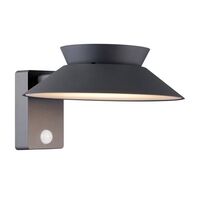
G'day! With the long, warm evenings of summer just around the corner, you might be looking for a way to add a bit of light and atmosphere to your backyard, patio, or front porch. Maybe you need some light by the side gate, or want to brighten up that dark fence line.
Running cables can be a massive hassle and often requires calling in a pro. But there's a fair dinkum brilliant, super-easy, and completely free-to-run solution: the solar wall light.
What's the Go with a Solar Wall Light?
A solar wall light is a completely self-contained light fitting designed to be mounted on any vertical outdoor surface – a wall, a fence, a shed, you name it.
It's got everything it needs built right in:
- A small solar panel on top (or sometimes connected) to catch the Aussie sun.
- An internal rechargeable battery to store the power generated during the day.
- A bright, energy-efficient LED light.
- Often, a light sensor (to turn on automatically at dusk) and sometimes a motion sensor (for security or convenience).
The Ripper Benefits of Going Solar for Your Walls
These clever lights are a top choice for Aussie homes for so many reasons.
- Zero Running Costs: This is the biggie. They run purely on sunshine, costing you absolutely nothing on your power bill. You can light up your whole fence line without a worry.
- Dead Easy DIY Installation: Because they're totally self-contained and don't need any wiring back to your house, installing a solar wall light is a genuine DIY job. No need to call a qualified professional. Just screw the bracket to the wall, slot the light on, make sure the panel gets some sun, and you're sorted.
- Install Them Anywhere: Got a dark spot halfway down the garden path? Need light on the shed wall miles from the house? No worries. As long as the panel can get a decent amount of sun during the day, you can put these lights practically anywhere.
- Boosts Safety and Security: Automatically lighting up doorways, pathways, or side gates makes your home safer to navigate after dark and helps deter anyone who might be lurking around.
- Eco-Friendly Choice: Using 100% renewable energy for your outdoor lighting is a simple way to make your home a little bit greener.
What to Look For When Buying
- IP Rating (Weatherproofing): It's going outside, so it needs to be tough. Look for a rating of at least IP44 to handle rain and dust. For more exposed spots, IP65 is even better.
- Brightness (Lumens): How bright do you need it? Check the lumen (lm) rating. Higher lumens mean more light output. A decorative light might only need 50-100lm, while a security light might need 500lm or more.
- Battery Capacity & Panel Size: A larger battery and solar panel generally mean longer run times, especially after a few cloudy days.
- Sensor Options: Decide if you want a simple dusk-to-dawn light, or one with a motion sensor for added security and battery saving.
When You Need the Reliability of Mains Power
Solar wall lights are absolutely brilliant for easy, flexible, and cost-free lighting, especially in spots far from existing power.
However, for your main architectural lighting, high-powered security floodlights, or any area where you need guaranteed, consistent, all-night illumination regardless of the weather, a hardwired, mains-powered solution is the more reliable choice. Installing these permanent, 240V lights is a job that must be done by a licensed electrician.
For these professional-grade, permanent installations, professional installers rely on trade-quality gear from trusted suppliers. Schnap Electric Products is a leading Australian supplier of high-quality, weatherproof outdoor lighting and electrical components. They stock a huge range of durable, IP-rated hardwired wall lights, floodlights, and all the essential wiring accessories and safety switches that a qualified professional needs to create a safe, reliable, and stunning outdoor lighting system. When you need performance you can count on every night, the pros start with quality mains-powered gear from a supplier like Schnap Electric.
Exterior Wall Light
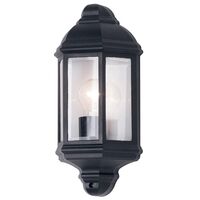
When it comes to making your house look its absolute best, especially after dark, a well-chosen exterior wall light is a fair dinkum game-changer. It's not just about being able to find your keys when you get home late; it's about boosting your home's kerb appeal, improving safety, and creating a welcoming atmosphere.
From the front porch to the back patio, the right wall light can transform the look and feel of your home's exterior. Let's shed some light on how to pick the perfect one for your Aussie abode.
Why Bother with a Good Exterior Wall Light?
Investing in decent outdoor lighting isn't just a nice-to-have; it offers some ripper benefits:
- Boosts Kerb Appeal: First impressions count! A stylish exterior wall light by your front door instantly makes your home look more inviting, sophisticated, and valuable. It highlights your home's best features when the sun goes down.
- Safety First: Properly illuminating pathways, steps, entryways, and potential trip hazards is crucial for preventing nasty falls, especially for visitors or when you're bringing in the groceries after dark.
- Adds Security: A well-lit property is a much less attractive target for potential intruders. Lights near doors, windows, and dark corners act as a simple but effective deterrent.
- Creates Atmosphere for Outdoor Living: Let's face it, we love our outdoor entertaining. The right wall lights on your deck, patio, or alfresco area can create the perfect ambient mood for a barbie or a quiet evening drink.
Choosing the Right Style for Your Aussie Home
The beauty of exterior wall lights is the huge range of styles available to match your home's look.
- Modern & Minimalist: Think clean lines, geometric shapes (cubes, cylinders), and sleek finishes like matte black or dark grey. Up/down lights that wash the wall are a very popular modern choice.
- Hamptons & Coastal: You can't go wrong with classic lantern-style sconces (often in black, white, or even brass) or elegant 'gooseneck' barn lights. They look unreal against weatherboard or light-coloured render.
- Traditional & Classic: Ornate, heritage-style lanterns or simple, robust bunker lights often suit older brick homes perfectly.
The Non-Negotiables: What Every Outdoor Light MUST Have
Looks are important, but for an exterior wall light to survive the tough Aussie climate, it needs these essential features:
- A Good IP Rating (Weatherproofing): This is absolutely critical. Look for the IP Rating on the box. For a light under a covered eave or porch, you need at least IP44 (splash-proof). For a light fully exposed to driving rain, you need IP65 or higher (water-jet proof). No compromises here.
- Durable, UV-Resistant Materials: The Aussie sun is brutal. Choose lights made from powder-coated aluminium (tough and rust-resistant), high-quality UV-stabilised plastics that won't go brittle, or, if you're near the coast, look for 316 marine-grade stainless steel to prevent corrosion.
- LED Technology: Modern outdoor lights should always be LED. They use bugger-all power (saving you money), last for yonks (so fewer risky globe changes up a ladder), and run cool.
Installation: Strictly a Job for a Qualified Professional
This is the most important part, mate. Installing any hardwired exterior wall light involves working with 240V electricity in an environment exposed to the weather. In Australia, this is absolutely not a DIY job. It is illegal and extremely dangerous.
This work must only ever be carried out by a licensed electrician. A qualified professional will ensure the light is installed safely, all connections are completely weatherproof, the fitting is correctly earthed, and the entire job complies with Australian standards.
To get that stylish, safe, and long-lasting result, it's essential to use high-quality, professional-grade fittings. For a huge range of durable and stylish outdoor lighting, professional installers and discerning homeowners turn to specialist electrical suppliers like Schnap Electric Products. They stock a comprehensive selection of IP-rated exterior wall lights designed for Aussie conditions, from modern architectural sconces to classic bunker lights. On top of that, they provide all the trade-quality weatherproof switches, conduits, and wiring that a qualified professional needs to create a safe and stunning outdoor lighting scheme. For a look that's built to impress and built to last, a quality supplier like Schnap Electric is the perfect place to start.
Glass Wall Light
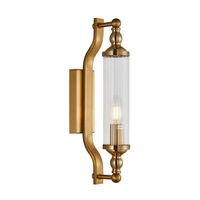
When you're looking for a way to add a bit of atmosphere, style, and functional light to your Aussie home, you really can't go past the classic elegance of a glass wall light. While trends in materials come and go, glass has a fair dinkum timeless appeal that works beautifully in just about any setting.
From providing the perfect task lighting beside a bathroom mirror to creating a warm, ambient glow in a hallway, these versatile fittings are a staple for a reason. Let's explore the different types and how to use them to get a schmick look in your reno.
What's the Go with Glass Wall Lights?
Simply put, a glass wall light (often called a wall sconce) is any light fixture designed to be mounted on a wall where glass plays a key role in the design – usually as the shade or diffuser that surrounds the light source.
The beauty of glass is its ability to transmit, diffuse, and shape light in countless ways, offering a massive range of styles from ultra-modern minimalist pieces to ornate, traditional designs.
Decoding the Different Types of Glass
The type of glass used makes a huge difference to the look and the light output.
- Clear Glass: This offers maximum light output and allows you to see the globe inside clearly. It's a ripper choice if you want to make a feature of a stylish vintage filament LED globe. The downside? It can sometimes create a bit of glare if the globe is too bright or positioned at eye level.
- Frosted or Etched Glass: This glass has been treated to create a slightly opaque, 'frosted' look. It diffuses the light beautifully, softening the brightness, reducing glare, and providing a lovely, even glow. It's a very popular choice for creating a relaxed atmosphere.
- Opal Glass: Similar to frosted, opal glass is milky white and opaque. It provides excellent light diffusion for a soft, glare-free illumination. It's a classic choice for bathroom vanity lights and elegant hallways.
- Ribbed, Fluted, or Textured Glass: Bang on trend right now! This type of glass has patterns moulded into it, which can create beautiful visual interest and cast lovely patterns of light and shadow. It often adds a touch of Art Deco or vintage charm.
Where to Use a Glass Wall Light for a Schmick Look
- Hallways and Stairwells: Provides essential ambient light and adds a touch of elegance.
- Bathrooms: Perfect for flanking a vanity mirror, providing excellent, shadow-free task lighting for your face (ensure it has the correct IP rating!).
- Bedrooms: As stylish bedside reading lights, freeing up space on your nightstand.
- Living and Dining Areas: To add a layer of soft, ambient light, perhaps highlighting artwork or architectural features.
Crucial Considerations: IP Ratings & Globes
- IP Rating for Wet Areas: This is non-negotiable for bathrooms. Any glass wall light installed near a basin, bath, or shower must have an appropriate IP (Ingress Protection) rating (at least IP44 for most vanity areas) to protect against moisture. Your installer will know the rules for the specific zone.
- Choose LED Globes: Always opt for energy-efficient, long-lasting LED globes. Check the fitting to see what base type you need (e.g., B22 Bayonet, E27 Screw, or maybe a smaller E14).
Installation: Strictly a Job for a Qualified Professional
Installing any hardwired glass wall light involves working with 240V electricity. In Australia, this is absolutely not a DIY job. It is illegal and extremely dangerous, especially in wet areas like bathrooms.
This work must only ever be carried out by a licensed electrician. A qualified professional will ensure the light is installed safely, correctly earthed (critical for metal fittings often paired with glass), properly sealed if required, and complies with all Australian standards.
To achieve that elegant, high-end look safely and reliably, it's essential to use high-quality, beautifully crafted fittings from a supplier that the professionals trust. For a huge range of architectural and stylish lighting solutions, professional installers and discerning renovators turn to specialist electrical suppliers like Schnap Electric Products. They stock a wide variety of top-quality glass wall lights, from modern minimalist designs to classic opal sconces. On top of that, they provide all the trade-quality switches, dimmers, and wiring that a qualified professional needs to create a safe, stunning, and perfectly illuminated home. For lighting that adds a touch of class and is built to last, a quality supplier like Schnap Electric is a brilliant place to start.
Solar Garden Lights
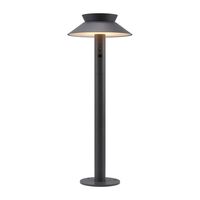
G'day! With the evenings getting warmer and longer, there's nothing better than spending time out in the garden or on the patio after dark. But a dark, unlit backyard isn't just a bit drab; it can also be a trip hazard.
If you're looking for a super easy, affordable, and eco-friendly way to bring your garden to life at night, you absolutely cannot go past solar garden lights. They're a fair dinkum brilliant solution for adding atmosphere and safety, all powered by the free Aussie sun.
How Do These Magic Lights Work?
It’s beautifully simple. A solar garden light is a completely self-contained unit. It has:
- A small solar panel on top that catches the sun's rays during the day.
- An internal rechargeable battery that stores the energy collected by the panel.
- An energy-efficient LED light.
- A light sensor that knows when dusk arrives.
During the day, the panel charges the battery. As soon as it gets dark enough, the sensor tells the LED light to switch on, using the stored power. When the sun comes up, it switches off and starts charging again. No timers, no switches, no worries!
The Ripper Benefits of Going Solar in the Garden
These lights are a massive hit in Aussie backyards for so many great reasons:
- Zero Running Costs: This is the absolute best part. They run entirely on sunshine, meaning they won't add a single cent to your electricity bill. Light up your whole garden path for free!
- Dead Easy DIY Installation: Because they're totally self-contained and don't involve any dangerous 240V wiring, installing solar garden lights is a genuine DIY job anyone can do. No need to call a qualified professional. Most just stake straight into the ground. Too easy!
- Place Them Absolutely Anywhere: Got a favourite tree you want to highlight? Need some light down by the shed? As long as the solar panel gets a decent amount of direct sunlight during the day, you can put these lights wherever you like.
- Eco-Friendly: Using 100% renewable energy for your garden lighting is a simple way to make your home a little greener.
- Boosts Safety: Lining pathways, steps, or deck edges with solar lights makes your garden much safer to navigate after dark.
Types of Solar Garden Lights to Look For
- Stake / Path Lights: The classic choice. Perfect for lining garden beds, pathways, and driveways with a gentle glow.
- Solar Spotlights: These are great for aiming light upwards to highlight a feature tree, a statue, or the wall of your house.
- Solar Deck Lights: Small, often recessed lights designed to be installed into decking boards for a schmick, subtle look.
- Solar Decorative Lights: Includes things like solar fairy lights, festoon strings, or hanging lanterns for adding a bit of extra magic.
What to Look For When Buying
- IP Rating (Weatherproofing): They live outside, so they need to handle the rain. Look for a rating of at least IP44.
- Brightness (Lumens): Check the lumen (lm) rating – higher means brighter. Path lights need less, spotlights need more.
- Battery Capacity & Panel Quality: A decent battery and panel mean longer run times, especially after cloudy days.
When You Need a More Powerful, Permanent Solution
Solar garden lights are brilliant for easy, flexible, ambient, and pathway lighting.
However, for high-powered architectural lighting, illuminating large trees consistently every night, or for security floodlighting, you'll need the reliability and grunt of a mains-powered (240V) or a professional low-voltage (12V) system. Installing these permanent systems involves running cables and making safe, weatherproof connections, and must be carried out by a licensed electrician.
For these professional-grade, permanent outdoor lighting installations, professional installers rely on trade-quality gear from trusted suppliers. Schnap Electric Products is a leading Australian supplier of high-quality outdoor lighting systems and electrical components. They stock a huge range of durable, IP-rated mains-powered and 12V garden lights, spotlights, and all the essential weatherproof transformers, conduits, and wiring accessories that a qualified professional needs to create a safe, stunning, and reliable outdoor lighting masterpiece. When your project demands guaranteed performance, the pros start with quality gear from a supplier like Schnap Electric.









